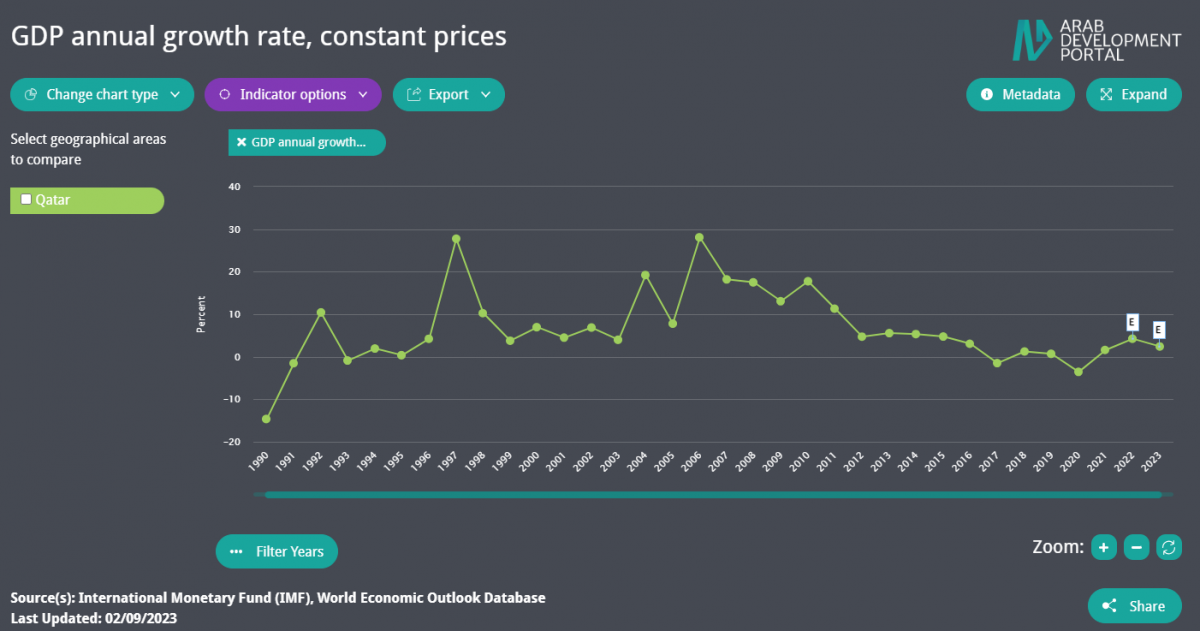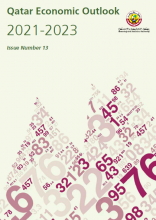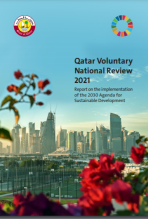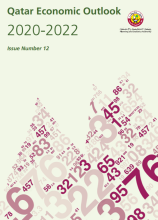 Qatar
Qatar
Qatar has an estimated population of 3.08 million in 2023. After winning the bid to host the 2022 FIFA World Cup, major infrastructure projects and substantial international investment programs were planned and developed, increasing the population by 88 percent since 2010 due to a massive inflow of foreign workers. According to the latest data published by the Planning and Statistics Authority, the number of non-Qatari workers was estimated at more than 2 million in the first quarter of 2023. Out of the foreign workers, 1.7 million are men; overall men outnumbered women by almost five to one in Q1 2023. The working-age population of 15-64 years makes up the highest share of the total population at 84.8 percent.[1]
Qatar’s Human Development Index value for 2021 is 0.855, which positioned the country among the very high human development group — ranking 42nd out of 191 countries and territories and the fourth among Arab countries and GCC countries.[2] The health sector in Qatar has seen remarkable progress in the past decade. Maternal mortality ratio per 100,000 live births dropped from 4.7 deaths in 2012 to zero in 2017 which remained at this level in 2020 for Qataris and registered 4.5 per 100,000 live births for non-Qataris. In 2021, the overall value increased to 7.6 per 100,000 live births, and the infant mortality rate per 1,000 live births was at 5 in 2021. Additionally, all births are performed in hospitals under medical supervision by skilled personnel, indicating a full coverage of maternal health care services at birth. The availability of essential health services reached 100 percent of the total population covered by primary health care, contributing to the elimination of many diseases.[1]
Qatar’s economy relies heavily on its hydrocarbon resources, however, economic diversification continued to reduce dependence on the hydrocarbon sector; although the share of energy-related exports in total exports continued to remain high, it declined to 81.8% during 2020 from 85.8% during 2019. [3] Qatar has been the world’s leading exporter of Liquified Natural Gas (LNG) since 2006, constituting 21 percent of total global gas exports in 2022. [4] Additionally, the country is the world’s sixth-largest gas producer and second-largest gas exporter.[4] In January 2019, Qatar ended its nearly 60-year-old membership in the Organization of the Petroleum Exporting Countries (OPEC) and withdrew from OPEC, supported by the authorities’ intention to focus on its plans to increase LNG production.[5] Qatar’s status as the world’s biggest gas exporter has made it the world’s richest country per capita, with a Gross National Income (GNI) per capita (Purchasing Power Parity) of $110,640.[6]
In the last few years, Qatar has been facing economic headwinds driven by the plunge in energy prices in 2014-2016 and upon Covid-19 outbreak. According to data from the Qatar Central Bank (QCB), real GDP growth has declined from 3.7 percent in 2015 down to 1.4 percent in 2018.[3] In 2021 and 2022, the Qatari economy grew at 3.1 and 4.3 percent after 2 years of negative growth.[7] Hydrocarbon GDP contracted to -1.5 percent in 2019, mainly due to a self-imposed moratorium on the development of the world’s biggest natural gas field and oil production cuts. Real growth in non-hydrocarbon sector fell to 1.5 percent of GDP in 2019 from 3.2 percent in 2018,[7] reflecting a contraction in the construction and manufacturing sectors as a result of the completion of a large number of infrastructure projects related to the World Cup, Hamad Port, Hamad International Airport, and roads and bridges.[7]
The overall fiscal balance has been fluctuating. According to data from Qatar Central Bank, the budget registered deficits of 9.2 and 6.6 percent of GDP in 2016 and 2017, respectively, prompting the government to accelerate fiscal reforms and spur economic diversification as laid out by Qatar’s National Vision (QNV) 2030. Higher total revenues driven by higher energy prices in 2018 alongside lower government expenditures have resulted in a surplus of 15.1 billion Qatari Riyal (QR), equivalent to 2.2 percent of GDP.[3] Despite economic disturbances caused by various factors, Qatar's net lending/borrowing registered a surplus of 7.4 percent of GDP in 2022 after a continuous deficit since 2014.[7] Similarly, the current account balance recorded a surplus of 6.4 percent of GDP in 2022, after a continuous deficit since 2015.[7]
This overview was last updated in November 2023. Priority is given to the latest available official data published by national statistical offices and/or public institutions.
Sources:
[1] Planning and Statistics Authority. 2023 [ONLINE] Available at: https://www.psa.gov.qa/en/Pages/default.aspx [Accessed 11 November 2023].
[2] United Nations Development Programme (UNDP). 2023. Human Development Index. [ONLINE] Available at: https://hdr.undp.org/data-center/documentation-and-downloads ; https://hdr.undp.org/data-center/country-insights#/ranks [Accessed 25 October 2023].
[3] Qatar Central Bank. 2023. The forty-second and forty-four annual reports [ONLINE] Available at: http://www.qcb.gov.qa/English/Publications/ReportsAndStatements/Pages/AnnualReports.aspx [Accessed 11 November 2023].
[4] British Petroleum. 2023. Statistical Review of World Energy Data. [ONLINE] Available at: https://www.bp.com/en/global/corporate/energy-economics/statistical-review-of-world-energy.html [Accessed 05 September 2023].
[5] Organization of the Petroleum Exporting Countries (OPEC). 3 December 2018. Press Releases 2018: Qatar gives notice of its withdrawal from OPEC. [ONLINE] Available at: https://www.opec.org/opec_web/en/press_room/5261.htm [Accessed 24 April 2020]
[6] The World Bank. 2023. World Development Indicators. [ONLINE] Available at: https://databank.worldbank.org/source/world-development-indicators [Accessed 23 August 2023].
[7] International Monetary Fund (IMF). 2023. World Economic Outlook Database and reports. [ONLINE] Available at: https://www.imf.org/en/Publications/SPROLLs/world-economic-outlook-databases#sort=%40imfdate%20descending [Accessed 24 October 2023].
Data Highlights
-
The IMF estimated that the GDP registered a growth of 4.2 percent in 2022 up from -3.5 percent in 2020




